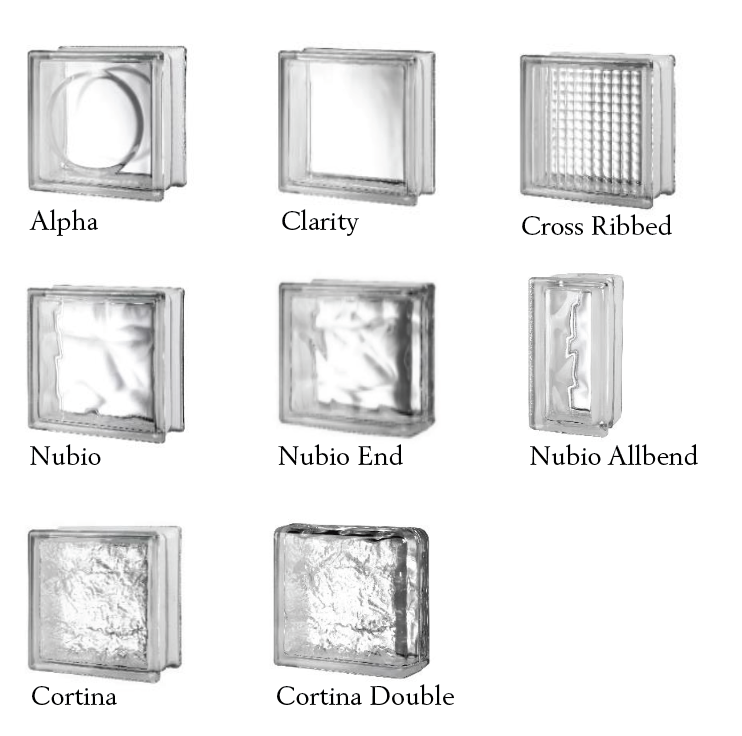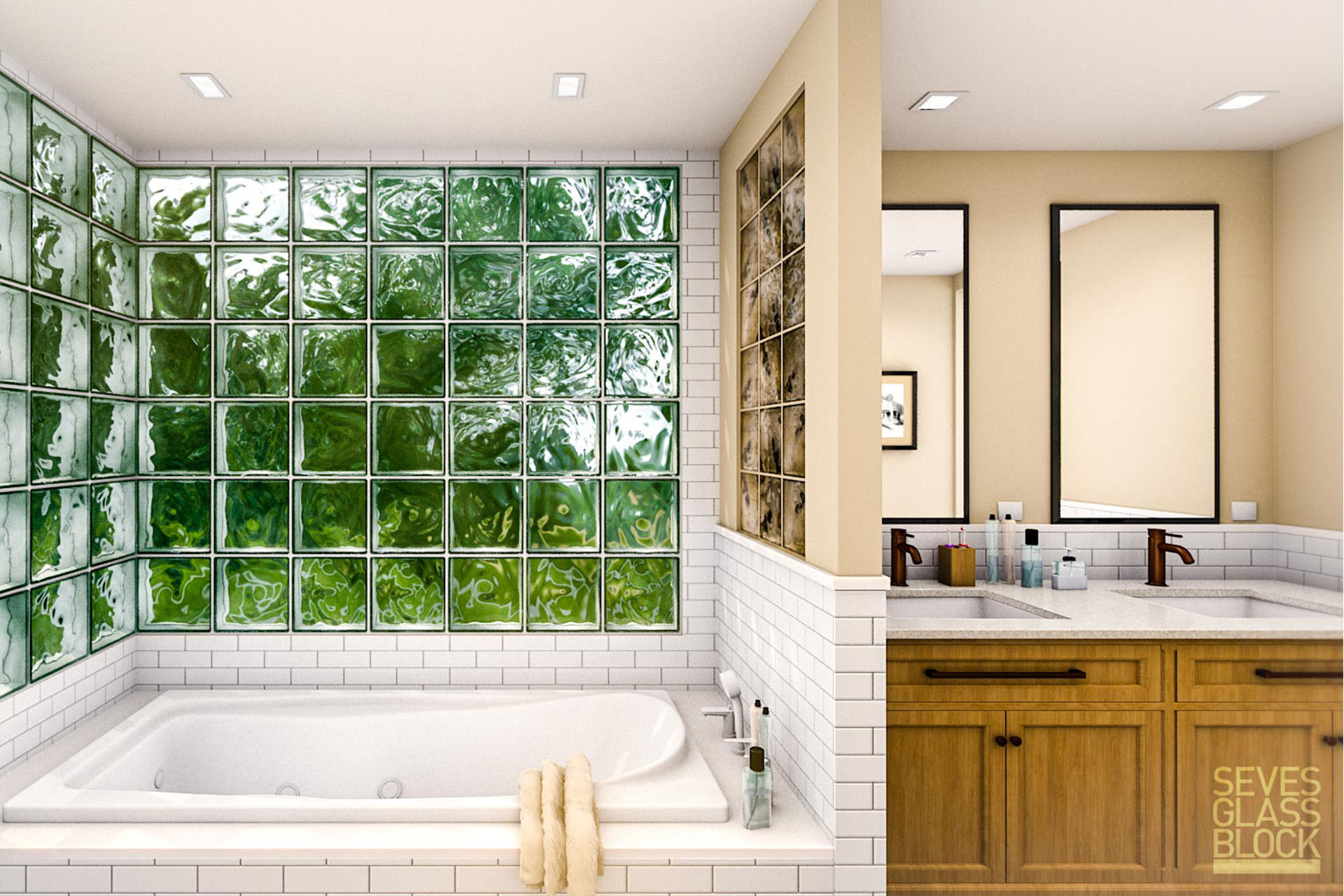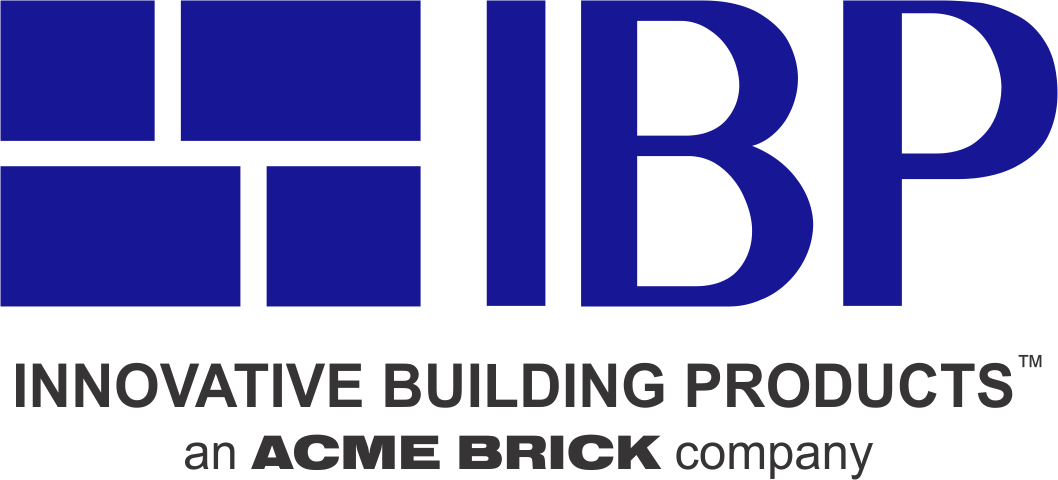Art Deco, a design trend that first gained popularity in the 1920s, has regained popularity, and we’ve noticed that our customers, who are architects, builders, and interior designers, are thinking outside the glass box. Glass block and brick are hot again, and this trend is being driven by the consumer’s appreciation of the natural radiance of light. Glass block gives a home or retail establishment an expanded feel, and we are seeing great interest in using this product for windows, walls, showers, flooring, and pavers.
Are your clients asking about glass block or glass brick? Take a look at these catalogs and give us a call with any questions.
Glass Block Versus Glass Brick—What’s the Difference?
Part of the reason these little glass boxes have regained design popularity is their multiple styles. Steve Boesch, with GBA Architectural Products + Services, notes that there is a difference between “glass block” and “glass brick.”
“A glass brick is just that,” Boesch said. “It is composed of solid glass, and this makes it extremely durable. We have had large infrastructure buildings, such as water treatment facilities, constructed of glass brick. They can meet a ballistic level of 1 through 6. The glass brick can be used in ‘Tornado-Resistant Glass Block’ windows and meet FEMA P361 Protocol. There are also options for hurricane-resistant glass block windows.
“Glass block is a more traditional design material,” he said. “It is manufactured by sealing two halves of glass and then stacked for walls. The look can be composed of a variety of styles, from wavy lines to concentric circles and many other styles. All are translucent and play with natural light. This is why architects and designers enjoy working with them.”
According to Vogue Living, glass block manufacturers are offering a fresh update on the ‘70s and '80s trend. “Some brands are taking the glass brick concept and making it contemporary—almost futuristic.” Boesch said. “Swapping out the square for the classic rectangle, the updated glass brick is all about texture, versatility, and making a statement.”

Everything Old Is New Again
According to this article from Architectural Digest, many of the early uses of glass block were for floor-to-ceiling facades. However, as the article notes, “designers today are finding ways to bring the material back to life indoors without the cringe-worthy ‘80s vibe.
“Los Angeles architect Richard Petit and his team used glass block in place of a main window at Mare Salon in West Hollywood and continued the theme for accent walls throughout the interiors. Swedish architect Christian Hallerod created dramatic walls of glass brick in NYC’s Byredo boutique to complement the light wood and Italian terrazzo surfaces throughout. And New York firm ASH NYC also paired glass blocks with terrazzo in the bathrooms it designed for the Siren Hotel in Detroit.”
The glass block available from Acme Brick was integral to the remodel of the newest Coach flagship store, located at 685 Fifth Avenue in New York City.
According to Coach, “The 20,000-square-foot retail space dedicated to the Coach brand showcases the brand’s distinctive modern luxury positioning. Specifically, the interior features an impressive, blackened steel and concrete staircase, which creates a sense of discovery while shopping, as well as a glass enclosed, vintage-inspired elevator. Throughout the three-level flagship is a mix of eclectic and bespoke furniture and objects, accented by custom-designed cabinetry, warm lighting, proprietary carpets, and fine millwork. Additional architectural elements include a glass-block facade, expansive windows, and a captivating, mechanized conveyor belt installed with a rotation of Coach products.”
How Homebuilders Can Ride This Retro Wave
Residential and commercial builders have seen demand increase for this retro look. Here are some ways they are employing it:
- To break up glass-block walls into smaller modules. For example, in the salon, the firm divided the block walls with black-painted frames so that they resembled Shoji screens.
- Pay close attention to the style of the glass block. Since “wavy” is the pattern most typically associated with the 1980s, experts advise avoiding this style and any surrounding textures. Think matte finish and warm tones. The beauty of glass block is that they emit a backlit glow, so any harsh colors or glossy surfaces near them could be a design fail.

The Energy Efficiency of Glass Block
“Architects, builders, and designers also love to use glass blocks because they are energy efficient,” noted Steve Boesch. “It is more insulating than a typical windowpane, and this, of course, saves the building owner money on their utilities. Special ‘Energy Saving’ block can achieve an R value of over 5. The next generation of glass block will also have the capacity of storing solar energy. This will encourage building owners to replace solar panels with these high-tech glass panels.”
How to Incorporate This Design in a New Home
While some will still hesitate to add glass block to an existing home, there are visually interesting ways to achieve this contemporary design.
Vogue Living suggests, “From shower dividers in the bathroom to creating a table from stacked bricks or filling in existing windows with clear versions, the glass brick is best styled minimally, so as not to overwhelm—no '80s clutter here.
“Mixing with materials like terrazzo, timber, and dark-colored frames, the glass bricks take on a contemporary feel instantly and provide an updated fit for 2023—no time warp required.”
Are your clients looking to add a touch of modern/contemporary design styles to their new home? Learn more about Acme Brick glass products by clicking here.

